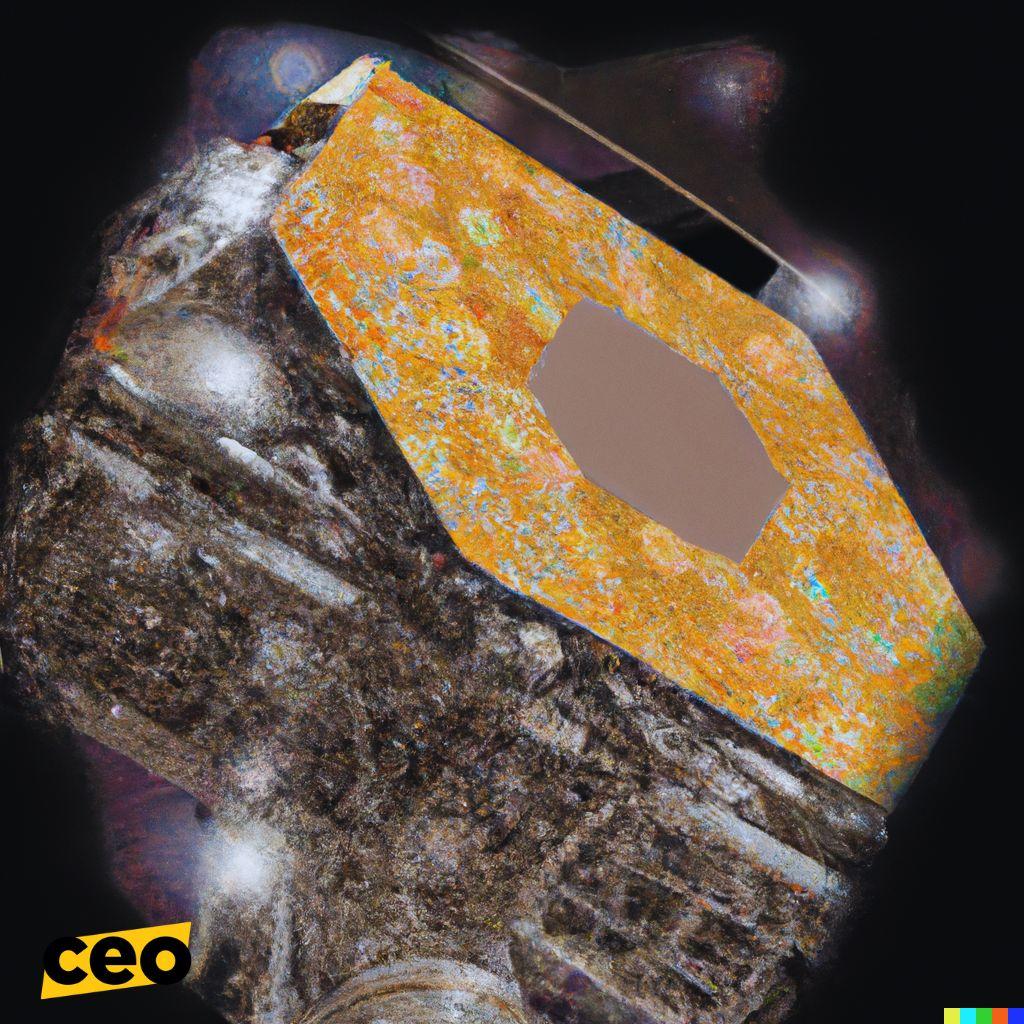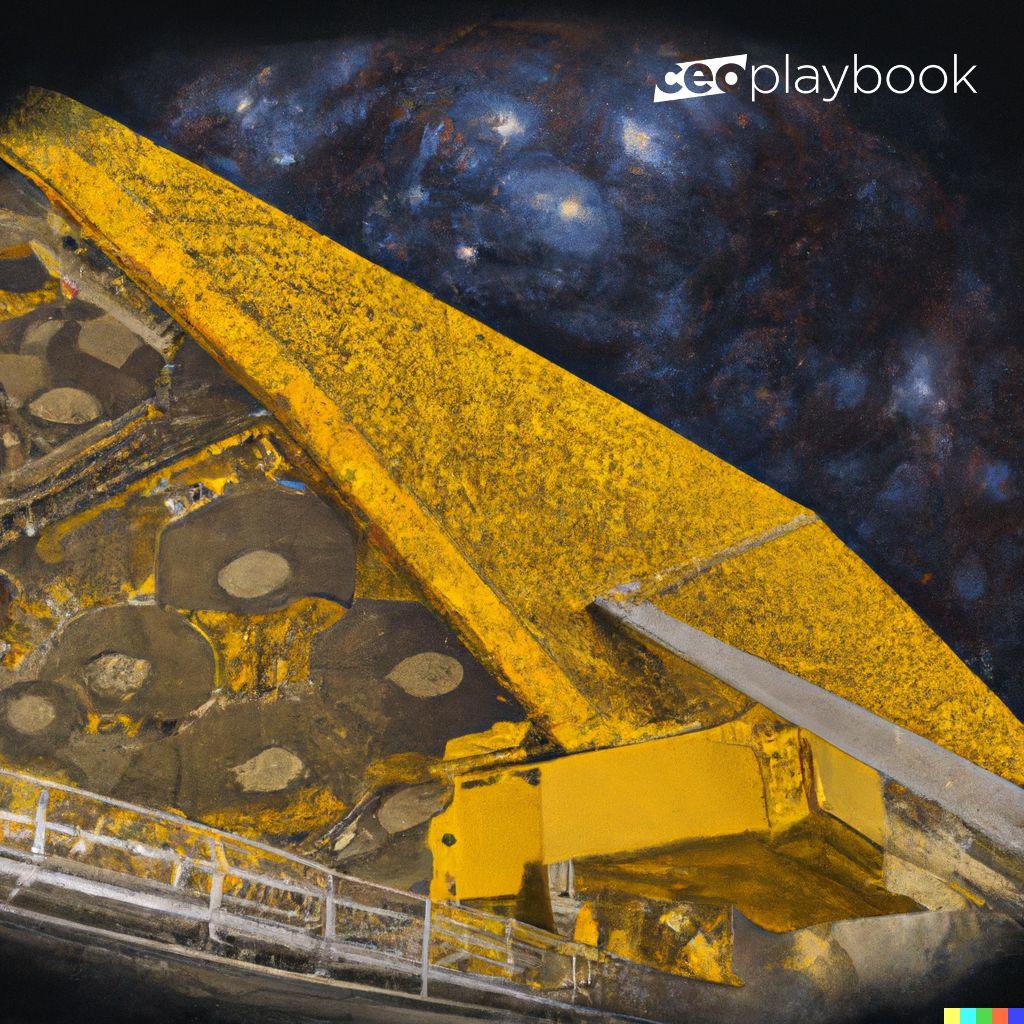January 2022, man’s most advanced observatory completed its million-mile journey to its final destination.
It overcame over 340 potential single-point failures to prepare to give humanity a glimpse we didn’t dream possible into the birth of the universe.
Once the images started flowing, we were all gripped with collective awe.
But we didn’t know that this powerful invention was the culmination of twenty years of failure and one man’s crowning success.
I am talking about the James Webb Telescope and Greg Robinson’s remarkable transformation of a near debacle into man’s greatest achievement.
“Greg Robinson turned a $10 billion debacle into a groundbreaking scientific mission. Every moonshot is the result of marginal improvements.” — WSJ
Cosmos
I fell in love with space after watching an episode of Carl Sagan’s television series, “Cosmos,” as a child on PBS. He had an incredible way of making the mysteries of the universe approachable. As a sophomore at Cornell, I was fortunate to see one of his lectures on NASA’s Viking mission to Mars. I was in awe.
The next time I felt that way was when I saw the first images coming back from the James Webb Space Telescope in the summer of 2022.
Named after James E. Webb, who was the administrator of NASA from 1961 to 1968 during the Mercury, Gemini, and Apollo programs, the telescope is a significant step forward in our ability to explore and understand the universe. Its advanced capabilities will enable astronomers to tackle various fundamental questions about the cosmos, including the formation and evolution of galaxies, the search for habitable planets, and the study of the atmospheres of exoplanets.
But it was a disaster of a project until Greg Robinson came along.
So, how do you turn around one of the most ambitious space projects ever built?
Greg focused on two human traits to solve an impossible problem: (1) Human error and (2) Fuzzy eyes.
Eliminating Human Error
Once the James Webb telescope arrived at its perch a million miles from Earth, this technological marvel did something incredible. It flawlessly unpacked a sun shield the size of a tennis court to protect it from extreme temperatures. But, during the first month of Greg Robinson’s tenure, he watched as the fasteners to this critical component popped free like loose buttons on an old coat.
Human error was rearing its head…
An excerpt from a 2018 Webb Independent Review Board report shares more examples:
Several [James Webb] Project problems due to human-induced errors had substantial cost and schedule impact.
In one case, an improper solvent was used to clean propulsion system valves that had been stored. The error was a failure to check with the valve vendor to ensure the solvent used was recommended and would not damage the valves. The valves had to be removed from the spacecraft, repaired or replaced, and reinstalled.
Another human-induced error was improper test wiring that caused excess voltage to be applied to transducers. The error resulted from an improper interpretation of a process step. The error should have been detected by the inspector, who did not inspect it but relied on the technician’s word that he had done the wiring correctly.
Another seemingly small mistake that had a large impact was discovered after the SCE Acoustic Test. To address the risk that fasteners for sun shield membrane covers might snag the membrane, the fastening lock nuts were tightened only to be flush with their bolts. Unfortunately, this compromised the locking mechanism, and after the test, loose hardware was found in the lower area of the spacecraft.

These findings and his experience with the sun shield emboldened Greg to create a robust testing program that checked the nearly 300 elements that had to go perfectly for the mission to succeed in deep space.
The James Webb team worked on a thousand complex problems for a long time. They were bound to make mistakes. Greg knew this and developed a series of systems to uncover those problems before launch time. He also ordered a full audit of the entire system from all angles.
“The designers, contractors, and engineers independently checked the paperwork against the hardware and compared their notes to identify and solve problems before they metastasized—the NASA equivalent of a colonoscopy. ‘We found a few things that needed moderate changes,’ Mr. Robinson says with an engineer’s understatement,” reported WSJ.
The IRB report again:
Space is a “one strike, and you’re out of business.” Hundreds of people can perform thousands of tasks correctly, but ultimately a mission failure can result from one person making one mistake that goes undetected. Or, if the mistake is caught in an advanced stage of a system’s development, the result can be large cost and schedule increases.
Human-induced errors can result from a flawed process, labor not properly interpreting the process or not properly following it, technicians needing to be trained and certified to execute a process, and functional organizations like Quality Assurance not properly verifying that a process has been implemented correctly. Despite best efforts, humans will, on occasion, make mistakes. Those mistakes must be detected and corrected by an effective safety net.
[Read: Should I Hire Generalists or Specialists?]
Greg Robinson implemented a robust process design to identify and eliminate human error. His philosophy and safety net consisted of the following:
- Checklists – new processes that produced predictable, repeatable results that were not subject to interpretation and that represented the collective learning experiences of the organization, including preventive/corrective action from past failures and anomalies.
- Training and Empowerment – Individuals were adequately trained in the processes, encouraged to follow them in a disciplined way, and were authorized to call a halt if something in the process didn’t seem right.
- Accountability – accountable individuals in functions like Quality Assurance ensured procedures were followed correctly before sign-off.
- Review – Verification and Validation testing to ensure system requirements are met. Independent analysis or inspection to supplement testing when necessary.
 [Read: How To Solve Impossible Problems.]
[Read: How To Solve Impossible Problems.]
Fuzzy Eyes
As Ken Chen from NYT explains the Webb mission…
For most space missions, once a spacecraft reaches orbit, you usually get this big sigh of relief because you feel like everything else will not be as complex. But this wasn’t true for Webb. It was only the first step. It had to travel to its destination. And then the hard part was its mirror had to undock itself and snap into its final configuration. The sun shield had to unfold and deploy. And NASA had identified 344 of what they called single-point failures. So if something didn’t snap into place, there was no backup system.
In other words, everything has to be perfect on the Webb mission. Every problem had to be solved before the launch, or it was doomed. Greg brought in a team with a fresh set of eyes to accomplish this. Smart, experienced scientists were not there to second guess the team but to look at the problems they were facing with a new lens.
Their jobs were to challenge the existing team. They would ask why until they reached the atomic level of a problem.
As Ed DeBono, the father of Lateral Thinking, puts it:
Challenge is never an attack. Challenge says this is an excellent idea, the best idea, perhaps the only idea. But for the moment, I’m going to put a block on it and, as a result, start looking elsewhere.
Universal Leadership
When Greg was offered the opportunity to lead the Webb program, he said no twice. It makes sense. Why would you want to take the helm of a failing project?
The answer is an opportunity to apply universal leadership. Greg brought the perfect leadership style at the right time. He was unassuming and focused on the mundane things that would impact the most. He let the team lead him down the path to success. He removed the obstacles the team could no longer see after 20 years of trying to win.
We don’t always know where or when our leadership will be pivotal. So, the modern leader must be open to new opportunities.
I can’t wait to see all else we will learn from James Webb.
As James Webb spreads its wings, it’s helpful to pause and revisit the triumphs of the previous generation of space observation technology – Hubble.
A Deep Dive on Hubble (with help from ChatGPT):
It was 1990 when the Hubble Space Telescope was launched, but its impact has been nothing short of astronomical. From the accelerating expansion of the universe and the existence of dark energy, uncovered through the study of distant supernovae, to the realization that black holes reside at the center of most galaxies, including our own Milky Way.
The telescope has even helped to uncover the presence of water vapor on celestial bodies within our solar system and provided insight into the atmospheres of exoplanets.
But the telescope’s discoveries don’t stop there. It has given us a window into the formation and evolution of galaxies, including the detection of newborn galaxies in the early universe. It has helped us to measure the mass of galaxy clusters and understand the distribution of dark matter in the cosmos. And through the phenomenon of gravitational lensing, the telescope has revealed the distribution of matter on the grandest of scales.
The Hubble Space Telescope has truly been a game changer for our understanding of the universe and the forces that shape it.
###


